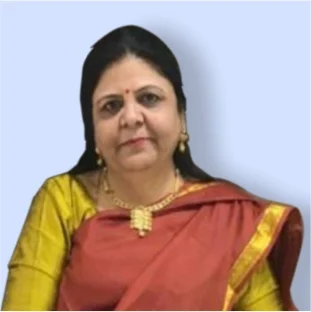
Are you looking for the best astrologer online? Get an online astrology consultation with a professional astrologer to find out the answers to all of your questions.
Pranayama is one of yoga's eight limbs. It follows the Yamas, Niyamas, and Asana as the fourth limb. Pranayama may gradually bring the mind into a state of clarity, preparing it for profound meditation.
Both yoga breathing practices, or pranayama, seek to assist us in living freely with our environment.
Our life, in many respects, begins with our first conscious breath and concludes with our last. The breath is supposed to convey a person's life energy, and our lives rely on a steady flow of oxygen to each cell.
One of the eight limbs of yoga is pranayama, which Patanjali defines as controlled intake and outflow of breath in a firmly set posture. Prana is the energy that animates and pervades the universe in and around us. While many modern yoga practitioners link yoga with physical postures or asana, Rishi parashar link it with the first documented literature on yoga stressed on the liberating meditation and pranayama techniques.
Pranayama
Pranayama may be an excellent supplement to your existing yoga practice. It help in reducing anxiety and sadness, lower and stabilized blood pressure, greater energy levels, lowered emotions of stress, better elimination, enhanced attention, and a heightened sense of self are some of the advantages of the various pranayama exercises.
Your body is like a light lamp and your mind is the light it spreads. The vital energy required by our physical and subtle layers, without which the body would perish, is known as 'Prana.' The prana or life energy within us feeds the mind and keeps the body alive. Prana denotes the universal life energy, while Ayama means to govern or prolong. Pranayama is the practice of operating in the prana dimension.
Prana literally means "vital life energy," while Yama means "control." Another way to say pranayama is pran-ayama, where -Ayama indicates extension. In this situation, pran- the breath is lengthened, and so the life force, energy, and even the number of years in your life are enhanced as a result of this exercise. Pranayama is a breathing practise that focuses on one or more of the following: inhalation (puraka), internal retention (Antara-kumbhaka), expiration (rechaka), and external retention (bahya-khumbaka). The exercises aid in the release of mental and physical blockages, allowing the breath and prana to circulate freely throughout the body.
The beginnings of modern pranayama techniques may be found here. It does, however, combine current understanding with traditional yoga in order to develop practises and better explain the psychological and physiological processes that occur during practise. Pranayama is often regarded as the second most popular yoga practise. It has been used successfully throughout the pandemic to accelerate the recovery of Covid-19 patients' pulmonary function. Although certain yoga breathing exercises require advanced methods, many may be performed by beginners.
Breath control and flow are taught through pranayama practises. When done correctly, attentive breathing can assist us in activating our prana, or life force energy. This is a system of important energy channels that circulate throughout the body. Prana is a generic term in yoga that refers to expressing the life forces of the entire cosmos. The vital life energy runs inside and around us, and our breath is the most delicate manifestation of prana in our bodies. It generates the consciousness energy that takes us into the present moment and controls all of our body's physical functioning.
Read Also:- Yoga: Your Personality Development Guru
Prana comprehension
Prana forms an aura surrounding the body. It passes via hundreds of subtle energy channels known as 'Nadis' and energy centers known as 'chakras.' The quantity and quality of prana, as well as how it travels through the Nadis and chakras, affect one's mental state. The mind remains peaceful, optimistic, and eager when the prana level is high, and its flow is continuous, smooth, and constant. However, due to a lack of awareness and attention to one's breath, the ordinary person's Nadis and chakras may be wholly or partially blocked, resulting in jerky and broken flow. As a result, one has more worry, anxiety, uncertainty, tensions, conflict, and other bad characteristics. Every problem begins in the subtle and then manifests on the physical level. Sickness manifests in your prana (Pranic Body) long before you get physically ill.
Conclusion
A regular breath practise can aid in the development of awareness. We begin to develop a new degree of mind and body awareness as we learn yoga breathing methods, which increases our ability to live in the current moment. Living in the present moment helps us to pay attention to our thoughts, feelings, and environment without passing judgement on them. Removing judgement from our minds improves our capacity to manage emotional reactions and brings serenity and satisfaction into our daily lives.
Learn astrology courses online from the best astrologer in India. Learn about different aspects of astrology, like astrology readings, prediction, and more. Free astrology classes are available as well. Further, explore numerology course, palmistry course, Vastu course, medical astrology with astrology certification. Register now.
Read Also:- How Yoga Is Beneficial For Skin Care?
Comments (0)
Categories
Recent posts


जन्मकुंडली में ...
30 Aug 2023
Importance of Bhakoot Koota in Kundali ...
30 Aug 2023

.webp)














